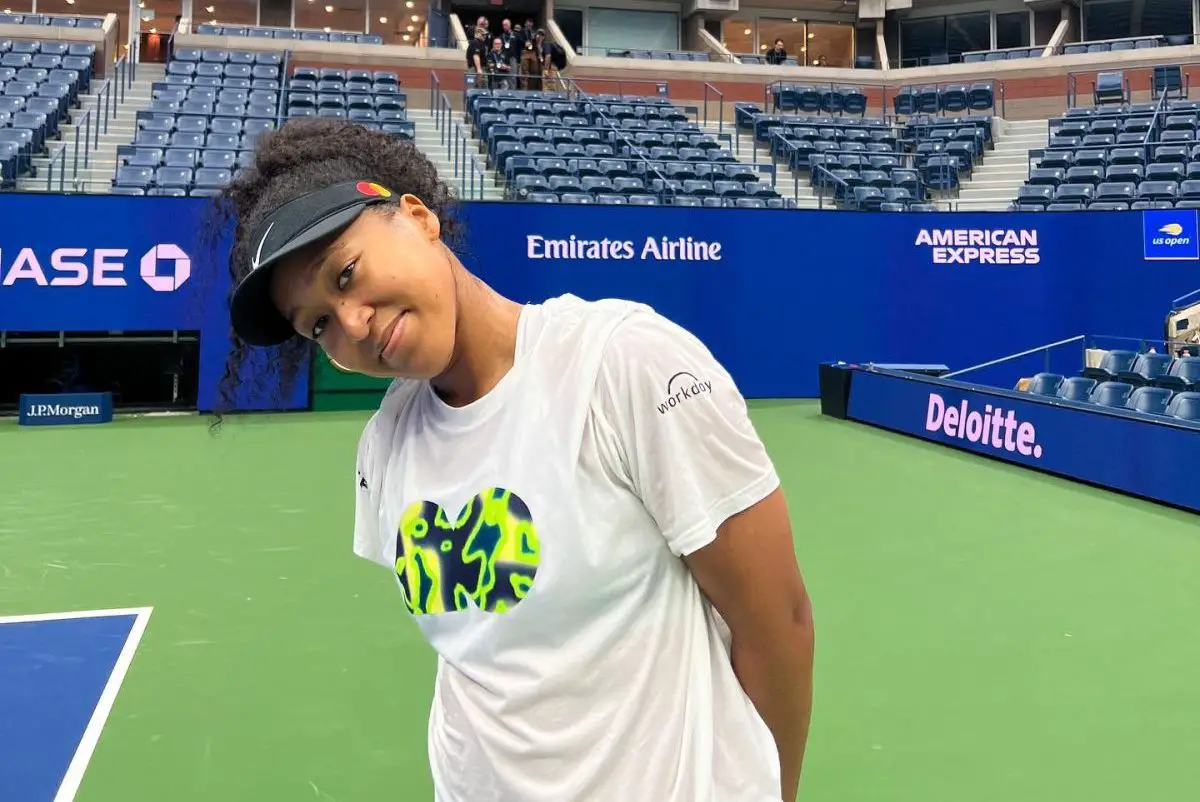Shadowed by the successes at the top of the ranks, a new generation of tennis players are still clawing their way to the top. Even more bittersweet is the story of those who have gotten a taste of fame before falling back into the fray. Unable to carve out a long-running legacy in the way of Serena Williams or Roger Federer, they win a major tournament or get to the final rounds but can’t seem to capitalize on their momentum — or seem to have lost it altogether. Players like Naomi Osaka, Emma Raducanu and Leylah Fernandez have many triumphant years ahead of them if they can take advantage of the situation — something that’s been hit-or-miss so far.
With the retirement of Williams and the retirement announcement from Federer, the end of a golden age of tennis is on the horizon. It’s hard to imagine a dynasty as powerful as Williams’, or a triumvirate like Federer, Rafael Nadal and Novak Djokovic repeating itself. All three men have won Olympic medals in the sport, the Swiss, Spaniard and Serbian taking gold, silver and bronze, respectively.
Williams, one of the best players of all time, retired with 23 Grand Slam championships under her belt, second only to Margaret Court’s all-time historical record of 24. Williams even holds 10 Guinness World Records: one for the most singles tennis matches won at the U.S. Open, one for the highest career earnings (female) and one for the most tennis Grand Slam singles matches won, among other tennis-related commendations.
For now, many familiar top players remain in major tournaments, and emerging stars are breaking through. The mantle of tennis is in good hands, but the starting-to-retire generation set a hard path to follow. For decades, hopefuls were stymied in their attempts to break into the upper ranks, and now that they have, they can’t seem to capitalize on it for long stretches of time.
A well-known name in tennis, Naomi Osaka is a top competitor. At 24 years old, she has held the No. 1 spot in women’s singles, beaten Williams in a U.S. Open final (2018) and has a career record of 64%, with 264 wins to 148 losses. Although her winning percentage is a far cry from Williams’ 84% winning record, Osaka still has 16 years to catch up; however, recent events have left her a little further from the spotlight.
In July 2021, the athlete withdrew from the ongoing French Open. Osaka cited mental health concerns, revealing her struggles with depression and anxiety. She admitted her difficulty coping with these concerns and her desire to withdraw to protect herself, which sparked controversy.
Earlier in the tournament, Osaka was fined $15,000 “for declining to appear at a mandatory post-match news conference,” which set off the chain of events that ended in her withdrawal. Such a confrontation would leave a bitter taste in anyone’s mouth, let alone someone whose reactions were highly televised and disseminated through the internet. After the incident, Osaka seemed to take a break from the sport.
Understandably, the time away to strengthen her mental fortitude took pressure off Osaka’s tennis game. A clean bill of health is vital for everyone and, even more importantly, one of the factors needed to succeed. After her break, there were hopes that the tennis player would return to the next tournament better than ever. Unfortunately, that was not the case.
Falling from a career-high No. 1 ranking in January 2019, Osaka is now ranked No. 48 in September 2022. As recently as the 2022 U.S. Open, she shocked the world with comments about her tennis career. The player said she felt restrained, suddenly unable to hit shots she has executed successfully for years. She admitted that she “just [didn’t] have the same feeling” as before, which left people wondering if she would be able to climb the ranks again.
With so many years ahead of her, it would be a shame for 2019 to have been the apex of Osaka’s career. But with mental health’s crucial role in sports and everyday life (especially for those in the public eye), it’s possible her ranking will drop even more before she makes a comeback.
Leylah Fernandez and Emma Raducanu were both relatively unknown before the 2021 U.S. Open final. They turned pro in 2019 and 2018, respectively, so the newcomers were still getting their bearings in the Pro Circuit as they began the final match. Fernandez managed to beat Osaka, the defending champion, on her way to the Center Court final. The historic final, which already broke records (Raducanu became the first qualifier to ever reach a Grand Slam final, and the match was the first between two teenagers since the 1999 U.S. Open between Williams, then 17, and Martina Hingis, then 18) ended with a triumphant Raducanu. The final also marked the first time a British woman had won a Grand Slam in 44 years.
Following the Open, Fernandez and Raducanu were predicted to go on to better and brighter things on the back of the final. Instead, they both fell back into the slow grind of climbing the tennis ranks.
Raducanu battled through tournament after tournament, and though she made it to the quarterfinals a few times, she otherwise was knocked out in early rounds. Several injuries including lower back problems, a wrist issue and a “freak” injury at the Nottingham Open saw her withdraw from many matches, holding back her chances of earning ranking points. Currently, she is ranked No. 77, a low blow after her career high of No. 10 following her 2021 Grand Slam win. At the 2022 U.S. Open, Raducanu was knocked out in the first round. She acknowledged the target on her back as defending champion and how “some competitors raised their game against [her]” to make up for it, but she also affirmed that competition would only serve to strengthen her game.
Leylah Fernandez has fared slightly better, ranking No. 38 at the close of the 2022 U.S. Open after losing the second round. She also advanced to the quarterfinals of the 2022 French Open earlier in the year. Like Raducanu, Fernandez returned to a more intermediate position on the Women’s Tennis Association Tour, where she lost in earlier rounds of 64 and 32. However, despite having a lower win/loss ratio than Raducanu (62% to the Brit’s 68%), her standing is higher. Partly from fewer injuries, but also because of her doubles matches (of which she has played infinitely more than Raducanu), Fernandez is strengthening her base in the Tour as she fights her way back up the ranks.
In tennis, it doesn’t all come down to talent. “Whoever wants it more” won’t always win. Sometimes serendipity or an opponent having a particularly good or bad day can determine the outcome of a match. Players consistently in the upper ranks are familiar with the cycle of wins and losses. Sometimes a lucky draw in a tournament or fortuitous circumstances can line a player up to advance to the finals when they normally wouldn’t. How they got there aside, if a woman is playing in the final of a Grand Slam, it’s safe to say she’s good at tennis.
So why can’t these players hold on to their winning streaks? Some would say it was all chance they won in the first place. Many fans believe that, like most everyone else in tennis, female newcomers must have their years in the dogpile. But history contradicts this: Federer’s record of winning his first seven Grand Slam finals in a row proves immediate success is not impossible but perhaps a matter of timing. Independent of external factors, Osaka, Fernandez and Raducanu all have the potential to forge their own great legacies. Some would argue Osaka already has. But when it comes to the next generation of female tennis players, only future tournaments can decide how the history is written.

















